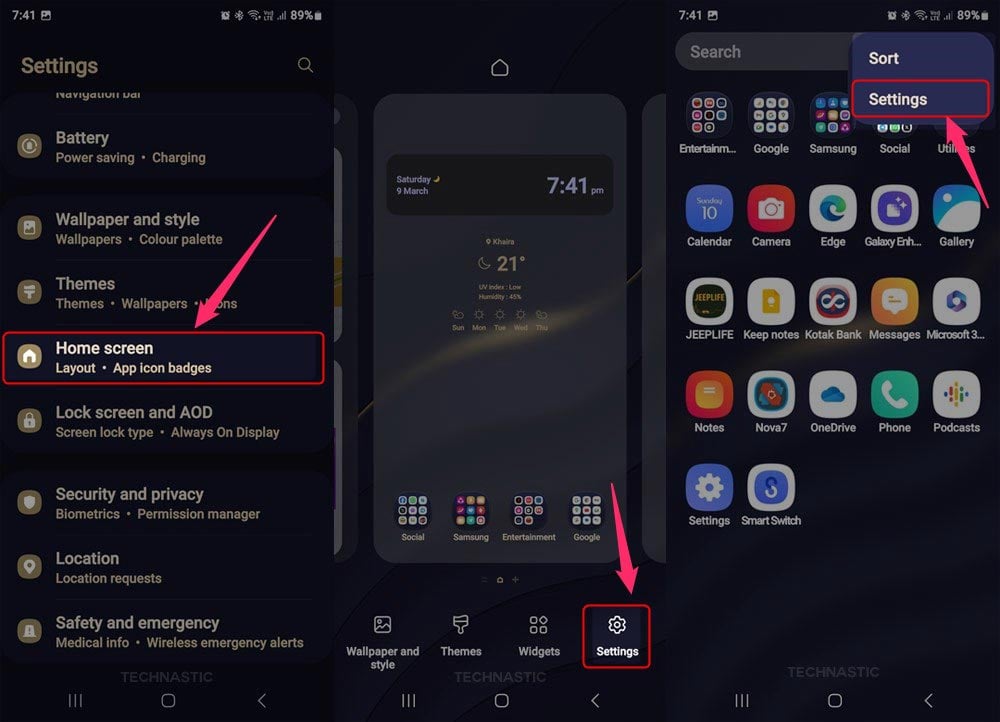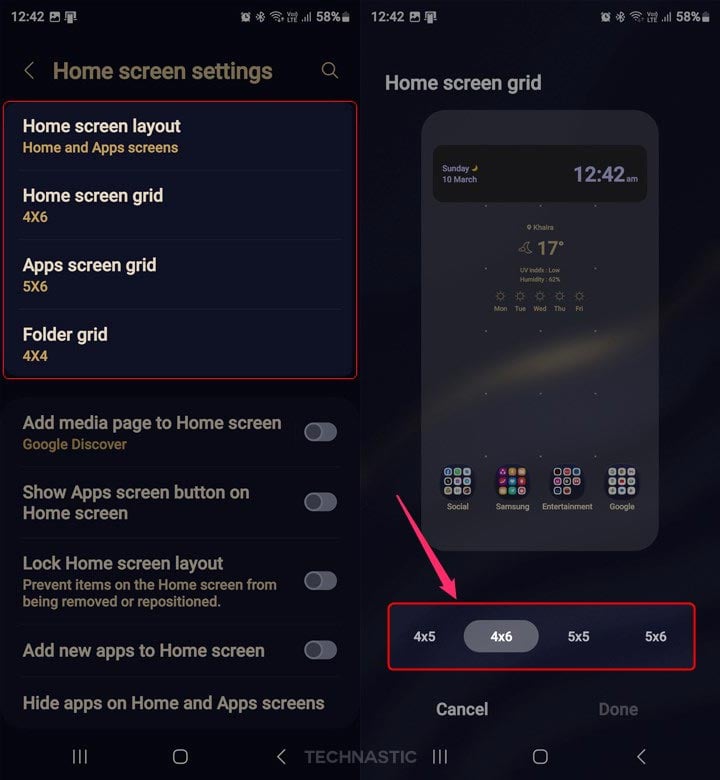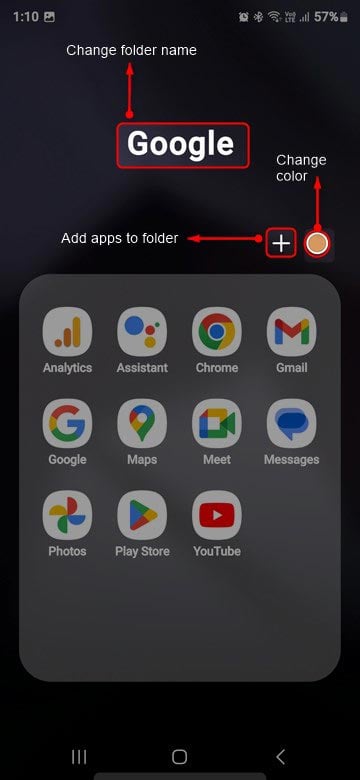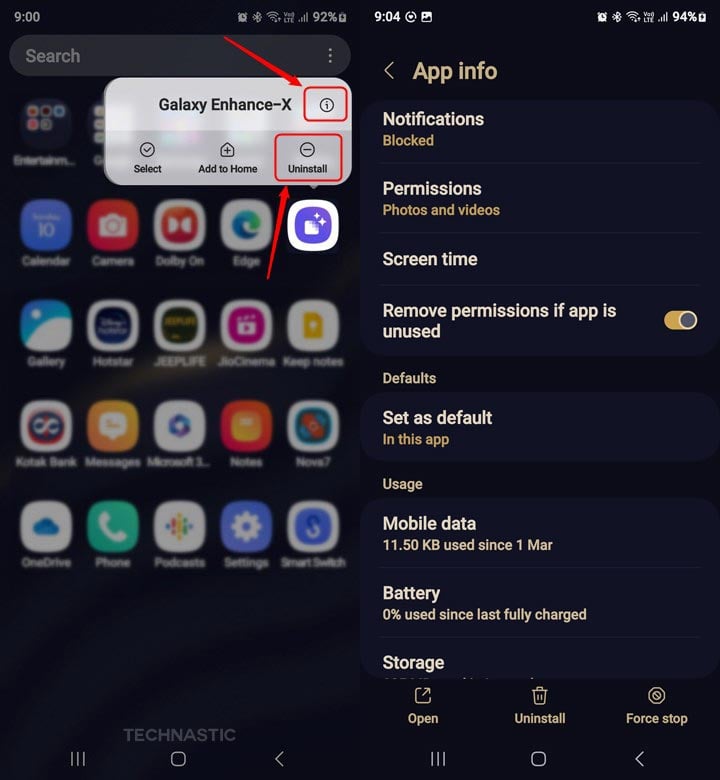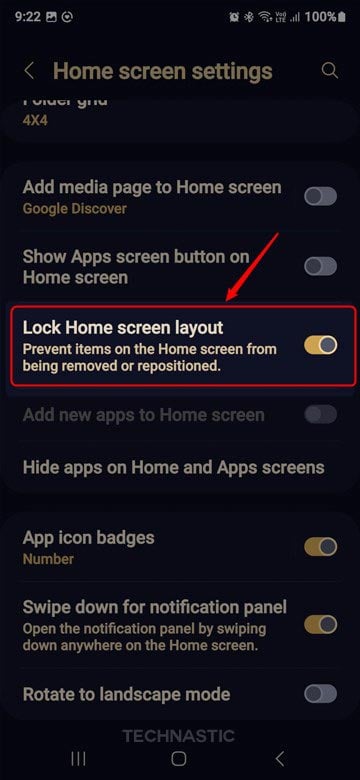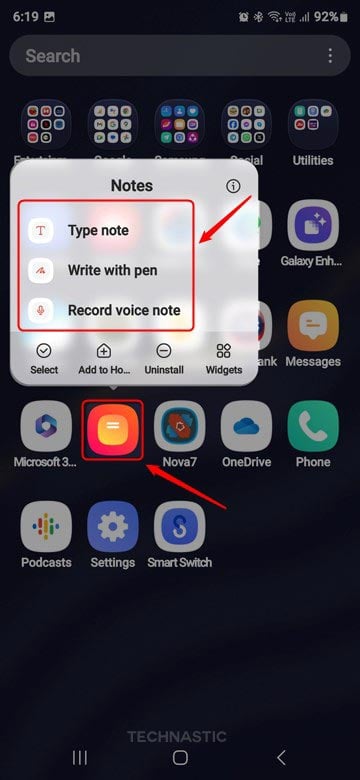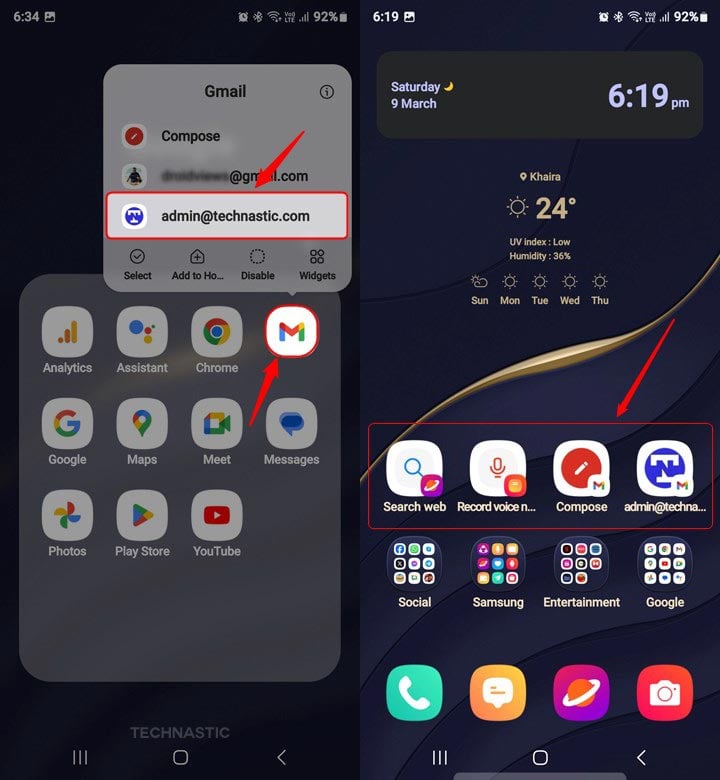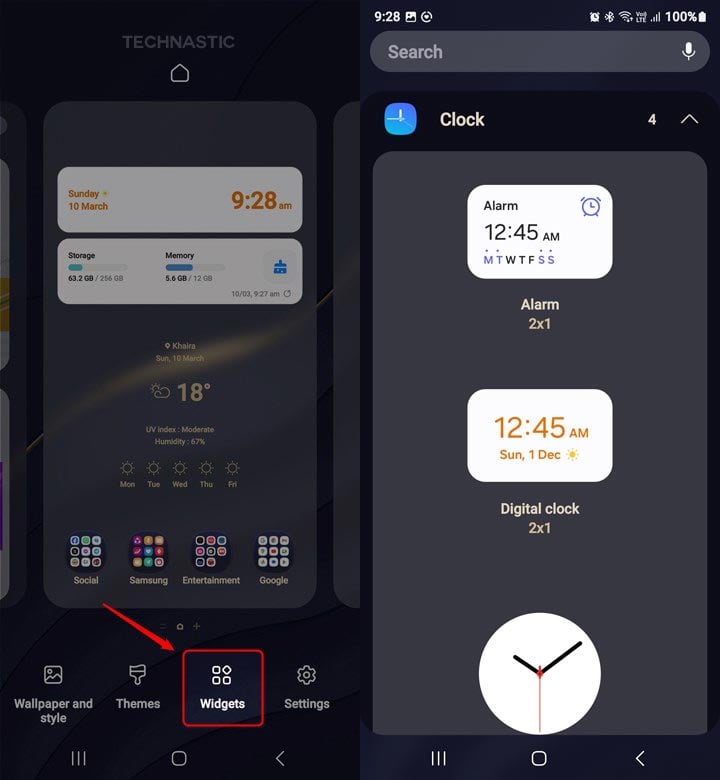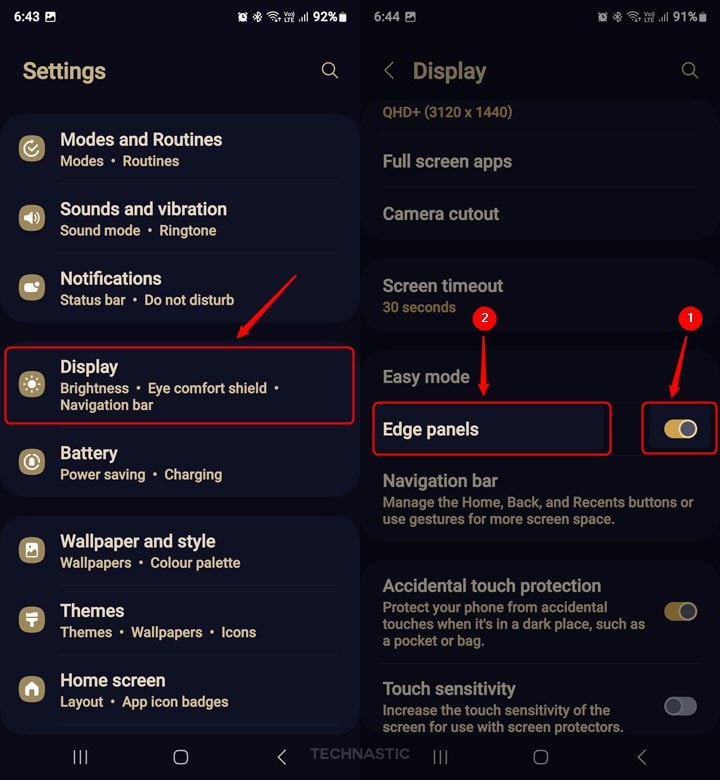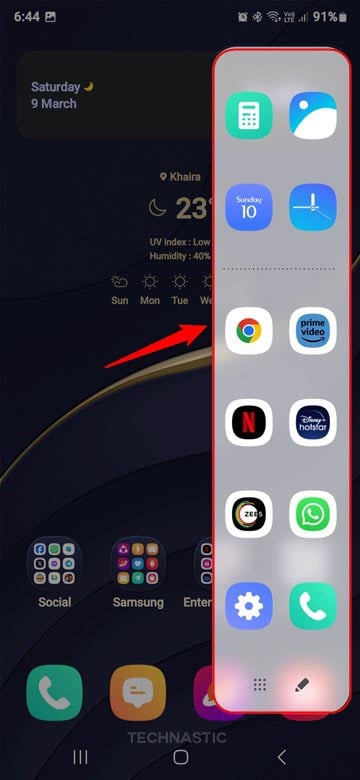The Android OS has exponentially evolved over the years. However, the stock Android launcher hasn’t been customization-friendly and looks drab. Thankfully, Android supports third-party home launchers which fill the void. Samsung’s One UI launcher doesn’t offer cool features like Nova Launcher but it is still better than the stock Android launcher. In this guide, we’ll share One UI 6 Home launcher customization tips and tricks to make the most of it.
Samsung One UI was first introduced in 2018 and has since become the default user interface for Samsung phones and Tabs. One UI launcher features a simplified layout with larger icons and easier navigation, making it ideal for one-handed use. It also offers a variety of useful widgets that can be added directly onto the home screen. These widgets provide quick access to frequently used apps like weather, calendar events, music players, etc.
I use Nova Launcher on my Galaxy S24 Ultra because it supports icon packs and customization of all aspects of the home screen and app drawer. The One UI 6 Home launcher supports icon packs downloaded from the Samsung Theme Store but doesn’t let you use 3rd-party widgets like KWGT Kustom Widget. However, it does let you customize your home screen and the app drawer to your preference. Below, we’ll check out all One UI 6 Home Launcher tips and tricks.
You can access One UI Home Launcher’s customization settings in 4 ways:
- Go to Settings and select Home Screen.
- Long-press an empty part of the home screen and select Settings.
- Open the app drawer or apps screen, tap the 3-dot icon in the Search box, and select Settings.
- Use the pinch-in gesture on the home screen and select Settings.
1. Add Apps and Folders to the Home Screen
Do you want to add your favorite apps or folders to the home screen for quick access? There are 2 ways to do this in One UI Home Launcher.
- Tap and hold an app icon or folder for 2 seconds. It will be added to your home screen. You can now drag it to your preferred location.
- Long-press an app or folder icon and select the Add to Home option from the pop-up menu.

2. Select Multiple Apps
You can select multiple apps on your home screen and app drawer and remove, disable, or uninstall them in one go. Similarly, you can also select several apps and add them to a new folder.
- To select multiple apps, long-press an app or folder icon on your home or apps screen and tap the Select option.
- The app or folder will be selected and a selection box will appear on all app icons.
- Select the apps you want to remove from the home screen, disable or uninstall from your device, or create a new folder with.
- Choose from the available options for the selected apps or folders.
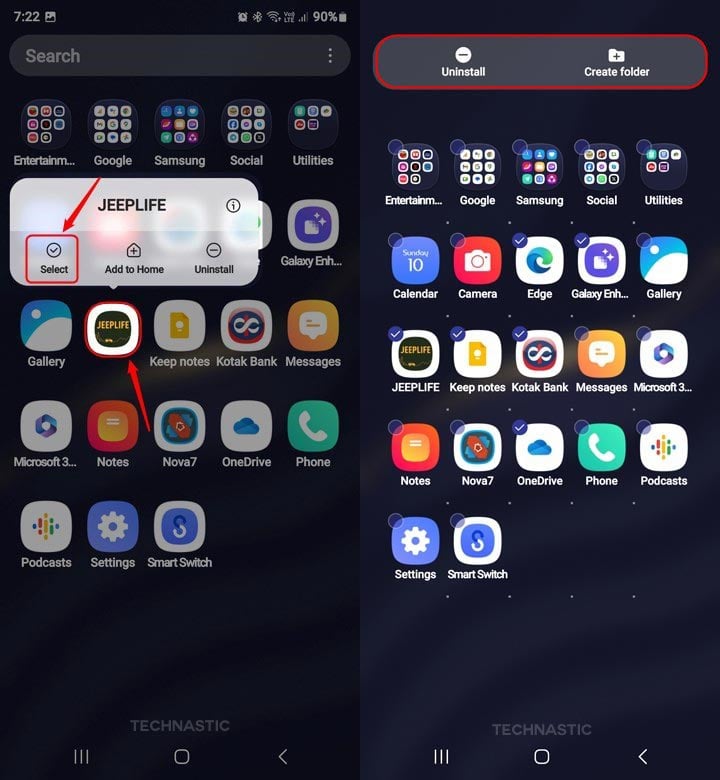
3. Arrange Apps in the App Drawer
With the abundance of apps installed on Samsung devices, it can be hard to keep track of them all. Thankfully, One UI Home Launcher lets you efficiently organize and arrange your apps.
- Open the app drawer and tap the 3-dot icon in the Search box.
- Tap on Sort and select the Alphabetical order option.

Doing so will fill the empty spaces in the app drawer and rearrange the apps alphabetically so you can access them more conveniently. If you go with the Custom order option, you can long-press your frequently used app icons and drag them to convenient grids to access them quickly.
4. Change Home Screen Layout
If you switch to a Samsung phone from an iPhone and miss the iOS-style app screen, do the following to have all your apps on the home screen.
- Open the app drawer tap the 3-dot icon in the Search box of the apps screen, and select Settings. You can also access home screen customization options in One UI Launcher by pinching in on your home screen.
- Go to Home Screen Layout in Home Screen Settings and enable the Home Screen Only option.

5. Customize Home and Apps Screen Grid
If you want more space on your home screen for apps and widgets, you can change the grid size by long-pressing on an empty part of the screen and selecting Home Screen Settings. Under Home Screen Settings, you can choose the number of apps shown on your home screen, app drawer, and app folders. You can choose from several grid options to customize your look and feel. Go to Home Screen Settings and select your preferred app grid.
- Home screen grid: 4×5, 4×6, 5×5, 5×6
- Apps screen grid: 4×5, 4×6, 5×5, 5×6
- Folder grid: 3×4, 4×4
6. Hide Unwanted Apps
This feature lets you hide apps from the home and apps screens. I have many KWGT widgets and icon packs installed on my Galaxy S24 Ultra. Since I can access them from Nova Launcher and KWGT apps, I don’t want these apps to clutter the app drawer. If you have such apps on your device, you can hide them to enjoy a cleaner app drawer.
- Go to the Home Screen Settings.
- Tap on Hide apps on Home and Apps screen.
- Now select the apps you want to hide and tap on Done.

7. Organize Apps in Folders
Creating folders on the Samsung One UI Home Launcher is simple and can help declutter your home and apps screen. To create a folder, long press on an app icon until a menu appears. Then, drag the app over to another app you want to include in the same folder. A new folder will automatically be created with both apps inside. You can continue adding more apps to the folder by dragging them onto it.
Once you have created a folder, you can further personalize it. Tap the ‘+‘ icon to add more apps to the folder. To assign a name to the folder, tap the name field and give it a name. Similarly, you can customize the background color of the folder by tapping the color dot icon and selecting a color from the palette.
Folders are also useful for organizing apps you don’t use frequently but still want quick access when needed. This is especially useful for organizing games, social media, or work-related apps. For example, you can create a “Utilities” folder which includes all your utility apps such as calculator, calendar, and voice recorder.
8. Quickly Access the App Info Screen
From the App Info screen. you can control app management options such as notifications, app permissions, battery usage, clear the app cache and data, etc. Usually, we have to navigate through the Settings menu to access the app settings. There is a quicker way to go to the App Info page for apps directly from the home screen and app drawer on your Samsung Galaxy device. Just long-press an app icon and tap the ‘i’ icon in the top-right corner of the pop-up menu. You can also uninstall or disable an app from the app menu.
9. Use Custom Icon Packs
Another way to customize the look and feel of your home screen and app drawer on your Samsung Galaxy device is custom icon packs. You can’t apply the icon packs downloaded from the Google Play Store in One UI 6 Home Launcher. However, you can download icon styles from the Samsung Theme Store and use them to customize your device. Here is how to do that.
- Tap and hold the home screen or use the pinch-in gesture to view One UI Launcher customization options.
- Tap on Themes.
- In the Galaxy Themes app, tap on Icons.
- Select the icon pack you want to use and tap the Download button.
- When the icon pack is downloaded, tap on Apply.
Alternatively, you can download and apply the icon packs from Settings > Themes > My Stuff > Icons.
I have handpicked 30 dark themes for Samsung One UI 6 that can revamp every aspect of the user interface of your Galaxy phone.
10. Lock the Home Screen Layout
Are you tired of rearranging your home screen layout whenever you accidentally move an app or widget? With Samsung One UI 6 Home Launcher, you can lock your home screen layout to prevent unwanted changes. With this feature enabled on your Samsung Galaxy device, you don’t have to redo your entire home screen setup whenever something gets out of place.
Go to home screen settings and tap the toggle next to the Lock Home Screen Layout option.
11. Quickly Access App Shortcuts
Android supports quick shortcuts for all apps. These shortcuts are defined by app developers so that users can access specific features of the app or perform specific actions without opening the app itself.
To use app shortcuts on your Samsung device, simply long-press on an app icon on your home screen or in the app drawer. This will bring up a menu with various options. You can then select the action you want to perform from this menu, such as composing a new email, creating a note, or starting a timer.
You can also create app shortcuts and place them on your home screen to use specific app features quickly. Tap and hold an app icon in the app drawer or the home screen. When the pop-up menu appears, long-press the app shortcut and it will added to your home screen.
Moreover, you can also create custom shortcuts for any webpage or contact on your device. For example, to add a webpage shortcut on your One UI home screen, open a website in Chrome, tap the 3-dot icon, and select the Add to Home screen option from Chrome’s menu.
Select Add when prompted. You can now open the webpage from your home screen without opening Chrome and typing the URL.
12. Add Widgets to the Home Screen
Widgets are mini-apps that display information or perform specific tasks without opening the app. They are essential to home screen customization and make it more functional. You can add widgets for weather updates, clocks, calendar events, music controls, and much more to personalize your home screen experience.
To add a widget on your Samsung One UI Home Launcher, long-press your home screen until options appear at the bottom. Tap on Widgets and scroll through the available options. Once you have found one that interests you, tap and hold it and drag it onto your home screen.
Widgets come in various sizes so choose one that fits well with your home screen layout. You can also resize widgets by tapping and holding on the widget and then dragging the borders to adjust the size.
You can also create a custom shortcut for one or more of your favorite contacts on your home screen. Open the widgets screen and open Contacts. Tap on Contact, Direct Dial, or Direct Message, and choose the contact you want to set on your home screen.
13. Enable Edge Panels
Samsung One UI has a feature called Edge panels. It is not a part of the One UI Launcher but works like a mini launcher. Edge panels allow you to access apps, contacts, weather info, compass, smart select, task tools, etc, from anywhere. Additionally, you can download more panels from the Galaxy Store. You can enable Edge panels, customize shortcuts from Settings > Display, and enable the toggle next to Edge Panels.
Then tap on Edge Panels to customize the edge panel shortcuts and the size and color of the handle. You can select from the preinstalled panels or download new ones from the Galaxy Store.
Now, you can access the Edge Panels from anywhere by pulling the sticky handle on your phone’s screen’s right or left edge.
14. Customize Notification Badge Style
The One UI 6 Launcher on Samsung Galaxy devices offers two types of notification badges. You can choose from dot and number-style badges.
- Long-press an empty area on the home screen and tap on Settings.
- Under Home Screen settings, look for the App icon badges option and tap it.
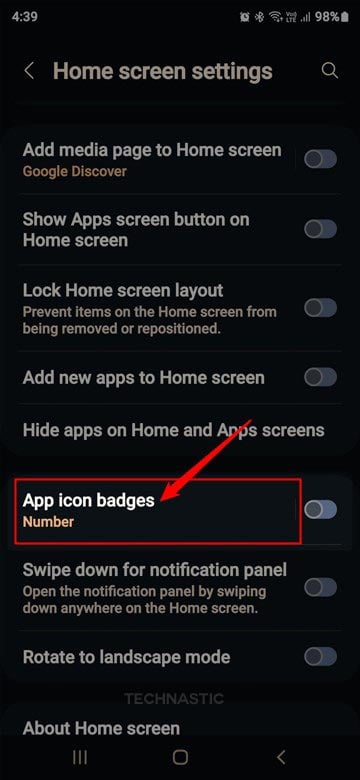
- On the next screen, tap the toggle next to App icon badges, and select your preferred notification badge style.
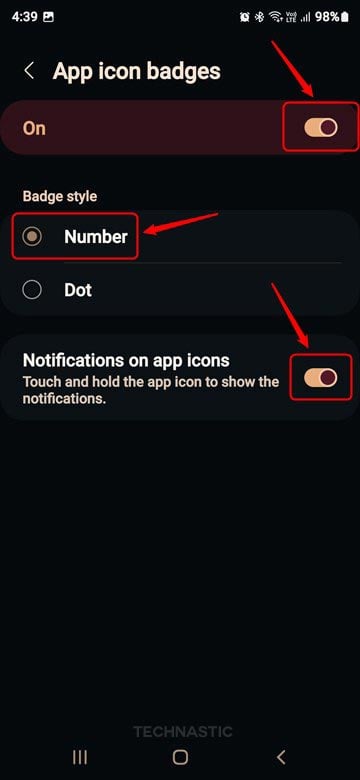
15. Use Home Screen Gestures
Gesture controls offer an intuitive way of navigating through your device. Samsung has incorporated various gesture controls in the One UI Home Launcher. You can use the following 4 gestures on the home screen of your
- Swipe up with one finger to go to the app drawer. Swiping down in the app drawer screen takes you to the home screen
- Swipe down with one finger to access the Notification panel. Repeating the gesture will open the Quick Settings panel. To enable this gesture, go to Home Screen Settings and tap the toggle next to Swipe Down for Notification Panel.
- Long-press an empty part of your Samsung phone’s or Tab’s home screen to view the home screen options like Wallpaper and style, Themes, Widgets, and Settings.
- Pinch in with two fingers to view home screen options. Pinch out to return to the home screen.
Now that you know all the pro tips to customize your phone’s launcher, do not forget to use the power-saving tweaks for improved battery life on your Samsung device.
